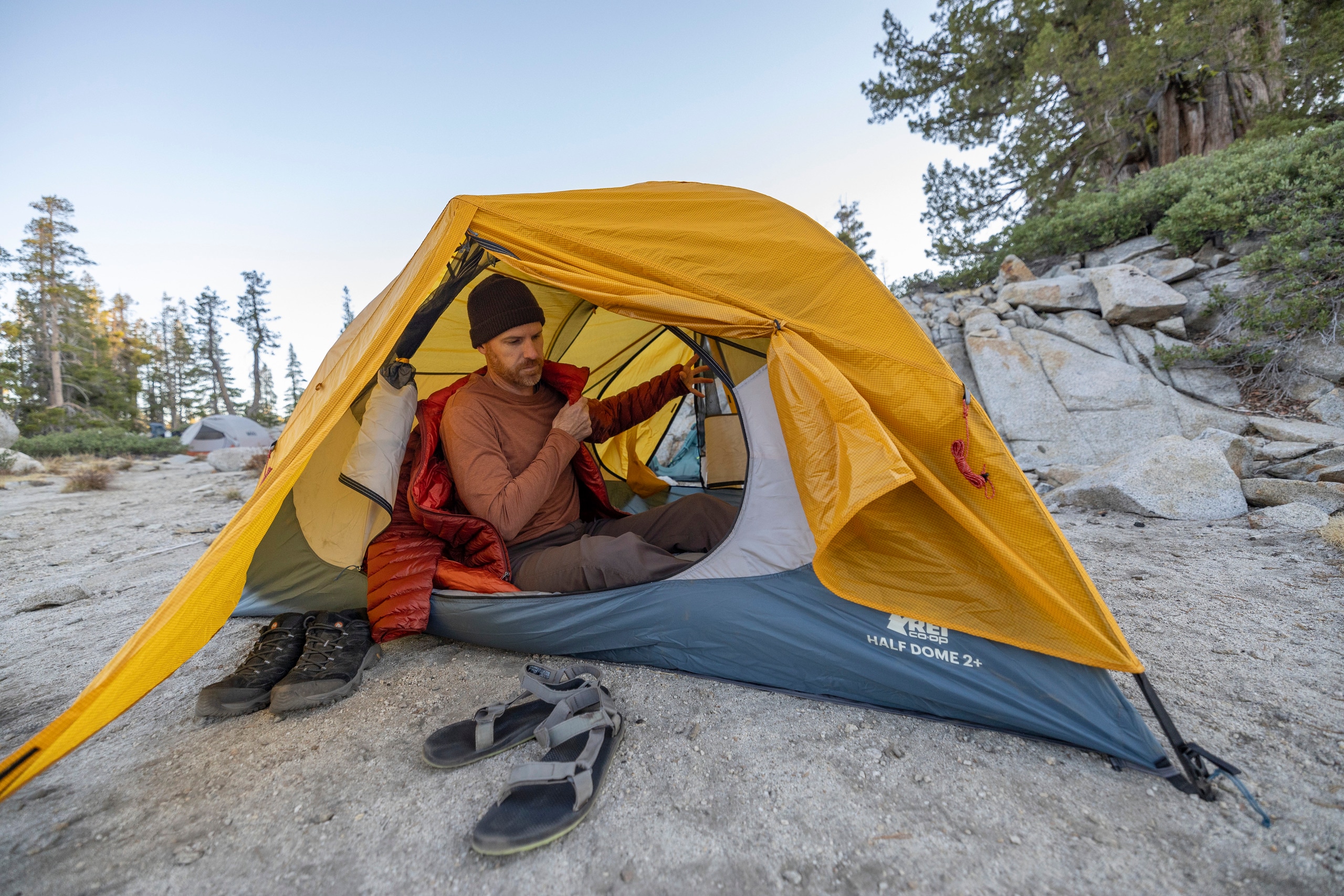How to Choose a Backpacking Tent

This product is not available.
Lightweight materials and roomy construction will make the 3-person, 3-season Force your go-to shelter when you want the perfect balance of weight savings, comfort and easy setup.
Shop similar productsImported.
View all Marmot Backpacking Tents| Best Use | Backpacking |
|---|---|
| Seasons | 3-season |
| Sleeping Capacity | 3-person |
| Minimum Trail Weight | 3 lbs. 15 oz. |
| Fly / Footprint Pitch Weight | Unavailable |
| Packaged Weight | 4 lbs. 5 oz. |
| Packed Size | 21.5 x 6.7 inches |
| Floor Dimensions | 70 x 88 inches |
| Floor Area | 40 square feet |
| Vestibule Area | 8.6 + 6.4 square feet |
| Peak Height | 42 feet |
| Number of Doors | 2 doors |
| Number of Poles | 4 |
| Pole Material | Aluminum DAC NFL |
| Pole Diameter | 8.7/9.3 millimeters |
| Canopy Fabric | 15-denier no-see-um mesh |
| Floor Fabric | 40-denier nylon with 2000mm coating |
| Rainfly Fabric | 30-denier ripstop nylon with 1800mm coating |
| Footprint Included | No |
| Design Type | Freestanding |
Adding a review will require a valid email for verification
Sorry to start on a negative point but I wouldn’t call the Force 3P an “easy” tent to set up (not idiot proof, anyway). While the arch poles at each end of the tent are fitted with hubs, the spine pole has little plastic washers between the last two segments that have to be snapped into the hubs each time you setup the tent. I’ve done it a few times now and I’ve gotten the routine down, but compared to designs in which the poles are permanently connected by hubs (e.g. the Limelight), this is far more “fiddly.” I’m not sure how much fun this would be to setup in a downpour; Marmot advertise this model as having “bare bones setup” ability (ground sheet sold separately) but I’m dubious that it could be “dry-pitched.” In terms of overall design, the Force 3P seems very structurally sound. I’ve only had it out in fair weather, mind, and will have to report on waterproofness and wind stability later. But let’s get down to brass tacks: the space – there’s loads of it. For such a light tent, it’s incredible. I do not possess the camera equipment capable of conveying the sheer cavernousness of this tent. Marmot’s new design of extending the ends of the tent beyond the footprint really does make a huge difference. This tent could sleep 4 adults in a pinch and comfortably accommodates 4 sitting cross-legged without as much hunching as you’d expect from a typical X-frame dome tent. My two-year-old’s first impulse upon entering the Force 3P was to start doing laps around the inside of it! The tent comes with: • 6 simple round alloy stakes with a crook at the top which are 15 grams each compared to the 18 gram hexagonal stakes from the previous generation Limelight 2P, • cheap non-reflective guy line and plastic tensioners, • an alloy tube for splinting a broken tent pole, • and 2 generous sized pieces of waterproof rip-stop with an adhesive backing. With everything in the bag, it weighs in at 1,945 grams (4lbs 4.6oz) on my kitchen scale. Awesome. While there are many tents on the market that achieve lighter weights than the Force 3P, they do so by shedding, what are for some, critical features. Comparing this to other freestanding tents, I am very happy with the purchase. It is lighter and yet significantly more spacious than, for example, the MSR Hubba 3 NX (which made a big deal of itself when it announced a massive weight-loss last year). Did I think seriously about getting the Fuse 3P instead for the added assurance of that bombproof fly? Of course. I just hope that the weight savings with the Force 3P doesn’t come with too many compromises and that my toddler doesn’t put a stick through the fly in the middle of a backpacking trip. Here are some design elements that I think could do with improvement: • As stated above, permanently link the poles together with hubs. • The ends of the kickstands that prop the vents open are fitted with the “spikey” hook and loop rather than the “fuzzy” side. While the spikey side faces the inside of the fly (up) when the vents are closed, it managed to snag the mesh of the tent body the first time I set it up, causing a small run in the mesh of the tent body; I don’t think a mosquito could fit through, but it’s a run nonetheless. I’m not going to cast judgement on the durability of the all-mesh tent body so early into testing, but I’m definitely going to be keeping an eye on it. • The cordage used for the stake out loops is reflective while the cordage included for guying is non-reflective and larger diameter. While it may be slightly stronger, I can’t help but think it more likely that it’s simply cheaper. This is a premium tent, Marmot. Give us reflective guy lines. • Due to the new headspace design, when the fly is guyed out there is a space above the head of the tent body like a mini-vestibule. It would be nice to have zippered access to this area like Sierra Designs is doing with its 2015 line, calling them “gear closets.”